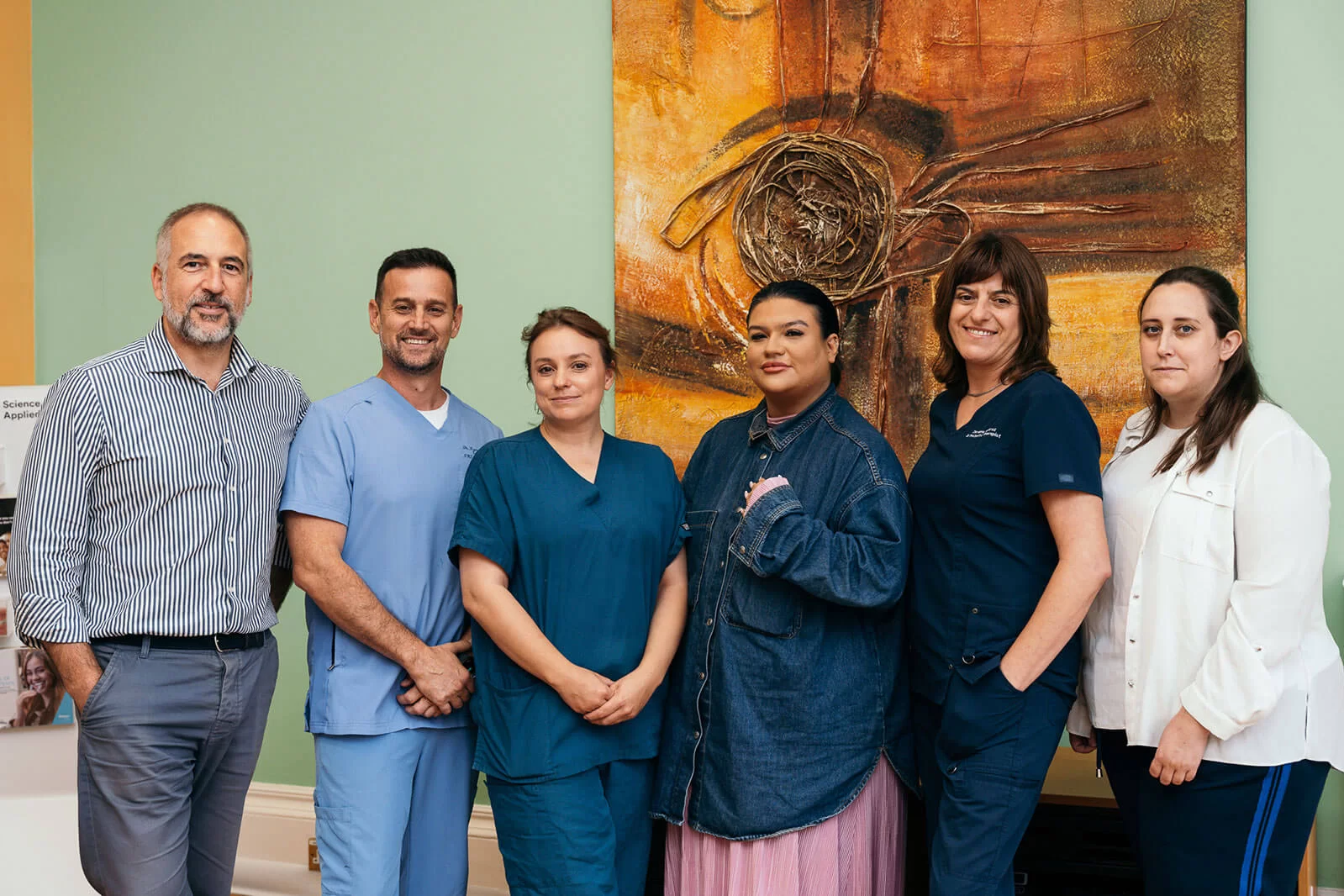Top 10 Signs Your Child May Need Braces: Advice From an Oxford Orthodontist

Early orthodontic assessments are important for catching developing bite and alignment issues before they become more challenging to correct. The British Orthodontic Society (BOS) recommends that every child have their first orthodontic check up around the age of seven; at this stage, orthodontists can evaluate whether your child’s jaw is growing as it should be.
In this article, we’ll discuss the most common indicators that your child may need braces - from visible dental crowding to frequent biting of the cheeks or tongue - so you know what exactly to look out for. With this knowledge, you’ll feel confident in seeking timely orthodontic care for your child, helping to ensure a healthier, more confident smile.
Why Is Early Detection of Orthodontic Issues So Important?
Early orthodontic intervention offers a range of benefits that can make orthodontic treatment easier, quicker, and more effective. By addressing developing issues while your child’s jaw is still growing, it’s often possible to guide the bite into a healthier position using simpler appliances and shorter treatment times.
Despite what you may be told by an NHS Orthodontist or Dentist, you don’t have to wait until your child has all their adult teeth; this is a requirement specific to NHS treatment. Many private orthodontists can begin effective treatment earlier, which can even make treatments even more effective.
Delaying treatment, on the other hand, can lead to more complex problems down the line:
- Misaligned teeth can result in jaw pain, difficulty chewing, speech issues, and uneven wear on the teeth.
- Crowded or overlapping teeth are also much harder to clean properly, increasing the risk of tooth decay and gum disease.
Spotting the signs early and seeking professional advice can help prevent these complications, giving your child the best chance at a healthy, confident smile!
Top 10 Signs Your Child May Need Braces
Let’s take a look at 10 of the most telling signs that your child may need braces or other orthodontic treatment:

1. Crowded or Crooked Teeth
When there isn’t enough room in the jaw for all of the teeth to line up neatly, they can overlap or twist, and the space between teeth may look unusually tight. This makes brushing and flossing tricky, trapping food and plaque, and can also affect bite function and facial symmetry.

2. Overbite or Underbite
An overbite occurs when the upper front teeth sit too far forward over the lower teeth, and an underbite is when the lower front teeth project beyond the upper; these are known as malocclusions. Both can place extra stress on the jaw joints, cause uneven wear on the tooth enamel, and sometimes lead to pain or temporomandibular joint (TMJ) problems.
3. Difficulty Chewing or Biting
4. Speech Difficulties
Lisps, whistling, or trouble pronouncing certain sounds can be caused by teeth that are too far apart, too crowded, or positioned incorrectly. Early orthodontic treatment can often make a big difference to your child’s speech, making it much clearer.

5. Thumb Sucking Beyond Age 5
Prolonged finger, thumb, or dummy sucking habits can push the front teeth forward and the upper jaw up, creating an open bite (front teeth that don’t touch) or other alignment issues. Breaking this habit early helps teeth and jaws form in their correct positions - our dedicated blog provides tips on how to help your child stop these habits.
6. Jaw Shifting or Clicking Sounds

7. Early or Late Loss of Baby Teeth
Losing baby teeth too soon - or not soon enough - can leave gaps that allow neighbouring teeth to drift into the space (leading to crowding) or delay the arrival of adult teeth into the correct position. By monitoring your child’s tooth loss, you can help ensure a smoother transition.
8. Mouth Breathing or Snoring
9. Teeth That Don’t Meet Properly

10. Frequent Biting of Cheeks or Tongue
What Treatment Options Are Available for Children?

Standard metal braces are the only option provided free by the NHS, offering reliable, effective solutions at no direct cost. Private orthodontists, however, can tailor treatment to your child’s lifestyle and aesthetic preferences by offering alternative treatments such as:
- Ceramic braces, which use tooth-coloured brackets.
- Virtually invisible aligners from brands such as Invisalign.
- Lingual “incognito” braces that sit behind the teeth.
With these wider options, you can ensure your child chooses a treatment that’s suitable for their needs, keeping their orthodontic journey as stress-free as possible.
Who Should You Contact About Orthodontic Concerns?

If you’ve noticed any of the previous signs that your child may need braces, it is important to contact your local orthodontist or dentist to receive the best advice about what to do next. There are two main routes to go down: free braces through the NHS, which involves a needs assessment that only ⅓ of children qualify for, or private treatment, which offers a wider range of solutions, no eligibility criteria, and little to no waiting times.
How Long Does It Take to Receive Braces?
The wait for braces depends on your chosen route. If you opt for free NHS braces for your child, the waiting list can sometimes be as long as 2 years. You will also have to wait until your child has lost all of their baby teeth or opt to have them removed before treatment starts. However, private orthodontic treatment usually begins much sooner, often within just a few weeks of your initial consultation!
How Long Will My Child Need Braces For?
Most children wear braces for an average of 18 to 24 months, although mild cases can be corrected in as little as 9 to 12 months, and more complex bite or jaw issues may require longer. Early assessments and interceptive care can sometimes shorten treatment time by guiding jaw growth before all adult teeth arrive.
If you opt for aligners instead of braces, the timeline is often a little quicker; on average, it takes 12 to 18 months to complete orthodontic treatment using aligners.
What to Expect at an Orthodontic Assessment

You don’t need a GP or dentist referral to book a private orthodontic assessment - if you’re local, simply contact our Oxford-based practice and we’ll get you started. Our care team, led by Specialist Orthodontist Dr Orolloga, has many years of experience in successfully treating children, helping them feel comfortable throughout the process.
During an orthodontic assessment, you can expect:
- Friendly Chat & Smile Assessment: Initially, a treatment coordinator will discuss any concerns with your child, then take a gentle look at their teeth, bite, and jaw movement.
- Digital Records: During a full orthodontic consultation, an in-depth assessment will be carried out, including photos, digital scans, and X-rays of your child’s teeth and jaw.
- Treatment Discussion: We’ll explain what we see, answer questions and outline any recommended next steps, using age appropriate language so your child feels involved.
- No Pressure, Clear Options: We’ll review estimated costs, timings, and the different solutions available, ensuring you feel confident about the plan before you leave.
Meet Your Local Oxford Orthodontist!

Have you noticed that your child has complained about jaw pain, or that their adult teeth appear to be overcrowded or protruding? At Accessible Orthodontics, our Oxford-based team brings years of specialist training and experience treating smiles of all ages.
Dr Orolloga and our friendly care team are here to make your orthodontic journey as comfortable and rewarding as possible. To arrange a FREE 30-minute consultation for your child, either online or face-to-face, simply book your appointment at a convenient time for you.
Latest Posts
-
Preparing Your Child for Their First Braces Appointment
-
Dealing with Braces Pain: How to Comfort Your Child
-
Brace-Friendly Meal Ideas
-
What Causes Crooked Teeth (and Can You Prevent It?)
-
Top 10 Signs Your Child May Need Braces: Advice From an Oxford Orthodontist
-
25 Orthodontic Stats & Facts That Will Surprise You
-
What Foods Can & Can’t You Eat With Braces?
-
Invisalign vs Braces | Which Is Best for You?
-
How Much Do Braces Cost in 2025?
-
What Are the Alternatives to Braces?